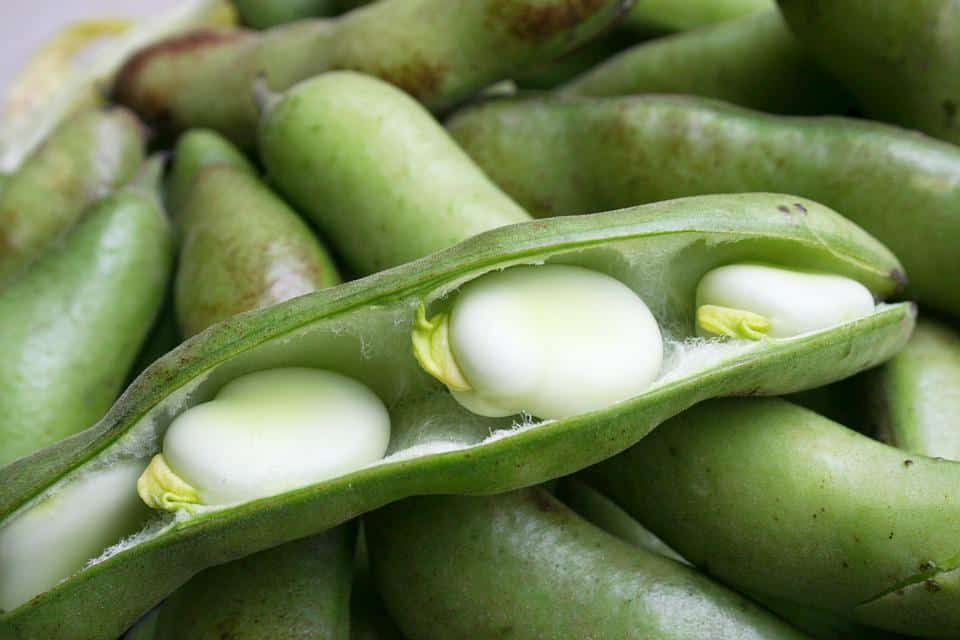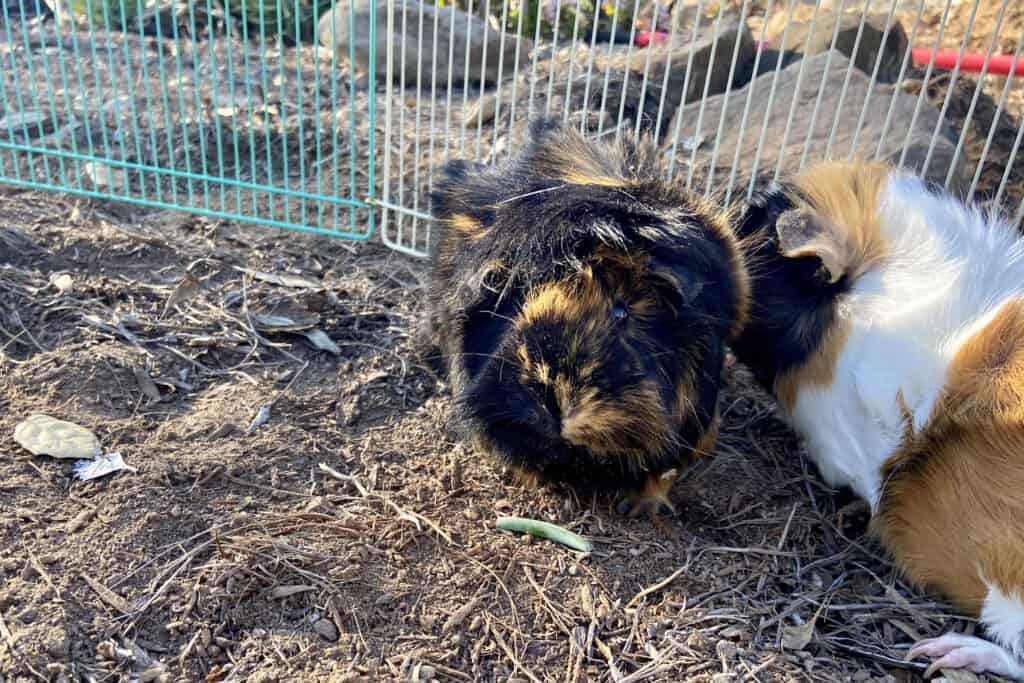As an Amazon Associate we earn from qualifying purchases.
Guinea pigs are herbivores, and peas are high in nutrients and widely consumed across the world. It’s unusual that you should ask if guinea pigs can eat peas when they’re such a common sight throughout the world. Guinea pigs are herbivores. It is safe for them to consume peas. However, can guinea pigs eat pea pods? Well, we will find that here. Plus, we will explore more about peas and guinea pigs.
It’s amazing how difficult it is to know what to feed your guinea pig. There are meals that appear to be okay but aren’t, as well as those that appear to be hazardous but aren’t.
Guinea pigs are vegetarian. As a result, they consume fruits, vegetables, grasses, and herbs in their diet. Hay and alfalfa make up the bulk of the guinea pig’s diet.
The final 30% is made up of healthy greens, fresh veggies, and a few pieces of fruit. It’d be hard to determine whether your sugar snap peas are fit to eat if you’ve never fed them before. In fact, peas are safe for guinea pigs in moderation, as it turns out.
Can Guinea Pigs Eat Pea Pods?
For sure! Guinea pigs can eat pea pods. In fact, they are quite healthy for guinea pig’s metabolism. Now, if you have garden pea pods, they are simply the best for guinea pig’s health. However, guinea pigs should only eat pea pods in small amounts due to their acidic content. Still, they are loaded with health benefits and a sound nutritional value.

Can Guinea Pigs Eat Sugar Snap Peas?
Sugar snap peas, also known as snap peas, are an excellent source of Vitamin C and K. It aids in the regulation of blood sugar levels and weight management by providing important nutritional benefits to people.
Is it safe to give my guinea pigs snap peas? Is it feasible for them to consume snap peas? We did some research on the subject and discovered the following. Guinea pigs can consume snap peas or sweet peas because they are high in Vitamin C, Fiber, and Carbohydrate.
However, snap peas are high in sugar and one of its major disadvantages for our guinea pig is that it contains a lot of sugar. As a result, it can only be given in moderation to our guinea pigs.
Can Guinea Pigs Eat Snow Peas?
Snow peas are completely safe for guinea pigs to eat. You may give snow peas to your guinea pig with confidence!
Vitamin C-rich legumes include zucchini, peas, and sugar snap pea pods.
Not only do guinea pigs require vitamin C obtained from plants, but also because they are unable to manufacture it themselves, they must consume veggies such as snow peas, which provide a substantial amount of vitamin C.
Guinea pigs will eat the entire snow peas plant, including the snow peas pod, snow pea shoot, and leaves, but the finest part is the snow pea pod itself.
When compared to other parts of the plant, the snow pea pod is not only more nutritious and abundant in vitamin C, but it’s also tastier. It’s also more fibrous, which is great for all sorts of guinea pigs. Vitamin C is an essential vitamin.
The snow peas pod and peas inside are the preferred component of guinea pig-friendly snow peas. Peas are a good treat for guinea pigs, but they can be fed sparingly because too much of any one thing is harmful. Guinea pigs may also be given peas with timothy hay or pellets and other fruits and vegetables as part of the guinea pigs diet.
The nutritional needs of guinea pigs are increased by their diet. Vitamin C, as well as other key elements in their daily food intake, is essential for them to stay healthy.
Once a week, provide guinea pigs with some snow peas, and offer at least two or three snow peas pods, or twice a week with at least one or two peas pods.
Overfeeding, on the other hand, should be avoided. Use recommended practices to keep your guinea pigs healthy.
What Are The Potential Risks And Health Issues Of Sugar Snap Peas?
Yes, sugar snap peas are good food for guinea pigs if eaten in moderation.
Sugar Snap peas should not be fed in excess. Anything that is excessive is detrimental to one’s health, and this holds true for snap peas as well. In guinea pigs, overfeeding snap peas can cause obesity, constipation, diabetes, and a slew of other health problems.
Excessive portions can have disastrous effects. Let’s look at some of the potential health issues of serving sugar snap peas in large amounts.

High Oxalic Acid Content
Sugar snap peas have a high content of Oxalic acid, which can be harmful to our guinea pigs. Sharp oxalate crystals form as a result of excessive oxalic acid accumulation, which can be devastating for our guinea pigs.
Excess intake of high-oxalate foods can also cause kidney stones in some cases. Guinea pigs should not consume more than 30 milligrams of oxalic acid per day, according to studies.
Urinary Complications
Sugar snap peas are a fantastic way to add more vegetables to your guinea pig’s diet. They are also high in calcium, which can cause urinary issues such as bladder stone formation, discomfort, and infections in the urinary tract if eaten excessively.
The need for calcium decreases as guinea pigs grow older. Guinea pigs require approximately 7-9 grams of calcium each day, according to studies.
Relatively High In Phosphorus
Sugar snap peas are high in content of phosphorus, which, if consumed in excess, may have a detrimental impact on guinea pig growth and survival. Our guinea pigs may acquire calcium phosphate deposits as a result of consuming a high phosphorus diet.
How Often Should We feed My Guinea Pig Snap Peas?
Sugar snap pea may be served twice a week to your guinea pig in moderate amounts. The problem with guinea pigs consuming huge quantities of food is that it can have a variety of negative consequences on their health.
Because of the fact that guinea pigs require a lot of calcium, feeding in moderate quantities minimizes the risk of health problems.
Sugar snap beans are high in sugar and oxalic acid, so you should keep in mind to present the meal in a reasonable quantity.
Find out can guinea pigs eat mangoes, raspberries, and celery?